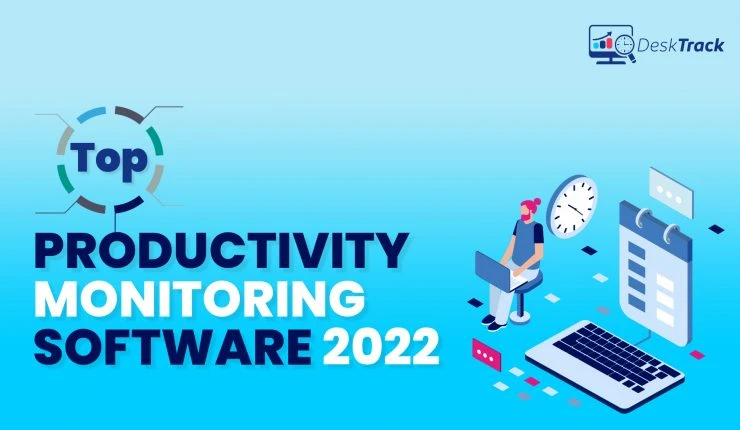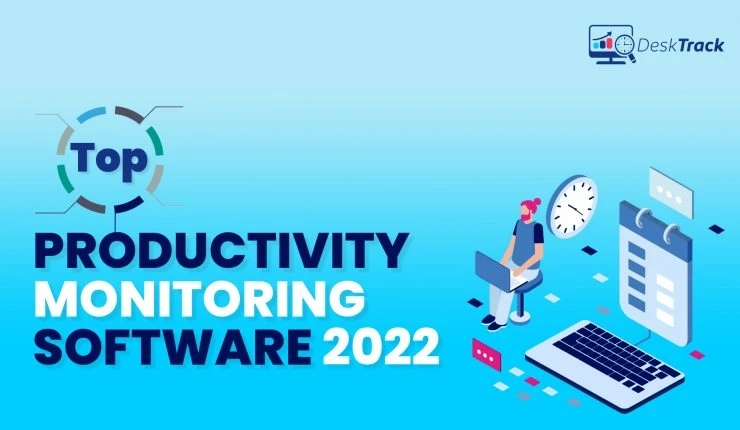In the modern working environment where technology and fast-paced have taken over, monitoring employee productivity with productivity monitoring software has become a necessity. Successfully implementing and using the best-fit productivity monitoring software solution in your organization will give you, your employees, and your business many advantages over your competitors. However, not so fast. Ensuring data security and employee privacy is as important as increasing their productivity. You need to stay updated with the latest rules and regulations for the best of your organization. So, in today’s post, we will shed some light on this topic.
Understanding the Importance of Data Security and Privacy

Employee monitoring involves the collection and analysis of vast amounts of personal data. This data can include time logs, application usage, keystrokes, and other metrics that provide insights into employee productivity. Without proper safeguards, this information can be vulnerable to breaches, misuse, and privacy violations. Therefore, ensuring robust data security and privacy measures is crucial to protect both employees and the organization.
Best Practices for Data Security in Employee Productivity Monitoring
1. Implement Strong Encryption
Encryption is the cornerstone of data security. Productivity monitoring software should use advanced encryption methods to protect data both at rest and in transit. This ensures that even if data is breached, it remains unreadable and secure. End-to-end encryption is particularly effective, as it secures data from the point of collection to its final storage location.
2. Use Secure Access Controls
Implementing secure access controls is essential to prevent unauthorized access to sensitive data. Role-based access control (RBAC) allows organizations to restrict data access based on an employee\'s role and responsibilities. This ensures that only authorized personnel can view or modify sensitive information, reducing the risk of data breaches.
3. Regularly Update Software and Systems
Keeping software and systems up-to-date is crucial for maintaining security. Regular updates fix known vulnerabilities and protect against threats. Ensure that productivity measurement software and employee monitoring software are regularly updated to incorporate the latest security enhancements.
4. Conduct Regular Security Audits
Regular security audits help identify potential vulnerabilities and ensure that security measures are effective. Conducting audits involves reviewing access logs, testing security controls, and assessing the overall security posture of the monitoring system. These audits should be performed by qualified security professionals to ensure thorough and accurate assessments.
5. Train Employees on Data Security Practices
Educate employees about the importance of data security, best practices for protecting sensitive information, and how to recognize and respond to potential security threats. Regular training sessions can help build a security-conscious culture within the organization.
Best Practices for Data Privacy in Employee Productivity Monitoring
1. Ensure Transparency and Communication
Transparency is key to maintaining employee trust. Inform your teams about the purpose, scope, and methods of monitoring. Communicate what data will be collected, how it will be used, and the measures in place to protect their privacy. Providing this information clearly and concisely helps employees understand the benefits and safeguards associated with monitoring.
2. Limit Data Collection to Necessary Information
Excessive data collection can infringe on employee privacy and increase the risk of data misuse. Define clear objectives for monitoring and ensure that the data collected aligns with these goals. Avoid collecting personal or sensitive information that is not directly relevant to productivity measurement.
3. Anonymize and Aggregate Data
Anonymizing and aggregating data can help protect employee privacy while still providing valuable insights. Anonymization involves removing personally identifiable information (PII) from the data, making it difficult to trace back to individual employees. Aggregated data provides a broader view of productivity trends without exposing individual performance details.
4. Obtain Employee Consent
Obtaining informed consent from employees before implementing monitoring practices is crucial. Ensure that employees are aware of the monitoring activities and voluntarily agree to them. This consent should be documented and revisited periodically to address any changes in monitoring practices or employee concerns.
5. Implement Data Retention Policies
Establish clear data retention policies to define how long data will be stored and when it will be deleted. Retaining data for longer than necessary increases the risk of attacks on privacy. Regularly review and update data retention policies to ensure compliance with legal and regulatory requirements.
Compliance Standards for Data Security and Privacy
1. General Data Protection Regulation (GDPR)
The GDPR is a comprehensive data protection regulation that applies to organizations operating within the European Union (EU) or handling the data of EU citizens. It sets strict guidelines for data collection, processing, and storage, emphasizing transparency, consent, and individual rights. Organizations using productivity monitoring software must ensure compliance with GDPR to avoid significant fines and penalties.
2. California Consumer Privacy Act (CCPA)
The CCPA is a privacy law that protects the personal data of California residents. It grants individuals the right to know what data is being collected, the purpose of collection, and the right to request deletion of their data. Compliance with the CCPA involves implementing measures to protect personal information and providing clear privacy notices to employees.
3. Health Insurance Portability and Accountability Act (HIPAA)
For organizations in the healthcare sector, HIPAA establishes standards for protecting sensitive patient information. Employee monitoring software used in healthcare settings must comply with HIPAA regulations to ensure the confidentiality, integrity, and availability of protected health information (PHI).
4. International Organization for Standardization (ISO) Standards
ISO standards, such as ISO/IEC 27001, provide a framework for implementing robust information security management systems (ISMS). Compliance with ISO standards demonstrates a commitment to maintaining high levels of data security and privacy, providing assurance to employees and stakeholders.
Conclusion
With that, we wrap up our post for today titled, How to Ensure Data Security and Privacy in Productivity Monitoring. To summarize, productivity measurement software solutions play a crucial role in increasing the overall productivity of your employees. However, it’s also essential to comply with the privacy and data security of your employees. You need to follow all the official rules and regulations regarding data security and privacy protection. Plus productivity monitoring must also be ethical at all times. Looking for the best productivity monitoring software? We recommend DeskTrack.


